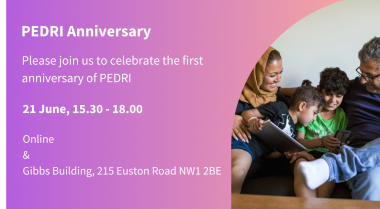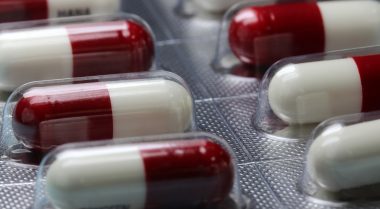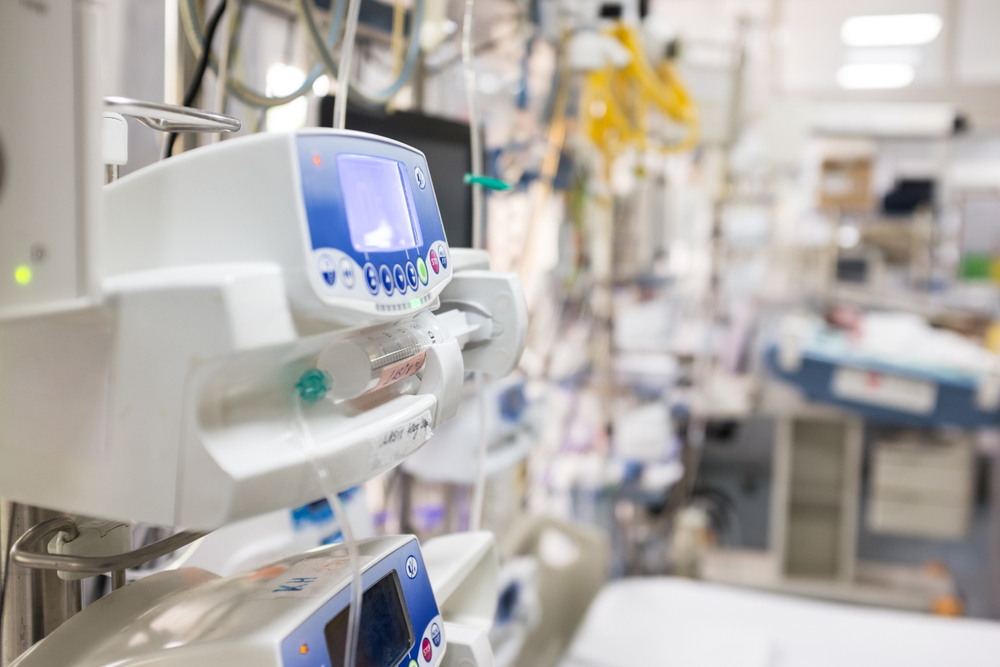RADAR Better Care Catalyst Project - view from the patient and practitioner
5 July 2021
Denis Collen, who lives Type 2 Diabetes on taking part in RADAR reflects on how the impact of the research; while two project leads discuss the benefits of collaboration for this project
I was first diagnosed with Heart Failure and Type 2 Diabetes in April 2010 which spurred me with the desire to want to become more involved in my healthcare and put me on the path of becoming a patient member of the Harrow CCG diabetes strategy board in 2017.
During the pandemic I found myself on the government shielded population list which was designed to protect people like me who were deemed clinically extremely vulnerable from COVID-19. During shielding my life completely changed from having to move my own consultancy practice to online, not being able to visit friends or go to the shops and being restricted to exercising once a day.
Following my experience of shielding I was motivated to look for further opportunities to become involved in healthcare and support other people living with Type 2 Diabetes in my Harrow community and North West London. During this time members from the North West London Diabetes Transformation Programme (NWL-DTP) Team who run the Know Diabetes Programme, reached out to say they were looking for patients to take part in projects to help support and engage people with Type 2 Diabetes to adapt to working digitally. With my background this was a great opportunity for me to use my experience and skills to become involved.
The RADAR Project
The NWL-DTP team invited me to take part in the ‘Risk Algorithms for Decision Support and Adverse Outcomes Reduction Project or, the RADAR project.
This project involved people like me living with Type 2 Diabetes in North West London, supported by clinicians, to provide feedback on the development and usability of tools in a platform called MyWay which have been designed to help predict patient levels of risk from their conditions.
I attended a series of online workshops with 8-10 other people living with Type 2 Diabetes in North West London to understand the background of the tools and the potential benefits they could bring in supporting people living with Type 2 Diabetes with the management of their condition.
Supporting the development
After our introduction to the project team, we had the opportunity to log in and test how we found using the tools in practice. This involved us logging into a test site to review and record our observations via a feedback form on the content and functionality of the platform including being asked for our thoughts on screenshots showing how the My Way platform looked on different devices and screens, e.g., via desktop, tablet, and phone models.
All of our feedback was submitted and, in a follow-up workshop the team discussed with us our views and ensured they had fully understood all our observations. This took place over an afternoon session using online whiteboards and group discussions ensuring everything was captured and documented.
Clinical and data learning from RADAR
The Risk Algorithms for Decision Support and Adverse Outcomes Reduction (RADAR) project is aiming to change the management of Type 2 Diabetes Mellitus for both patients and clinicians. By testing and rolling out successful Artificial Intelligence models, the project aims to allow patients to better understand what factors contribute to potential complications and allow clinicians to implement earlier interventions. Two key collaborators in the implementation of this project in North West London are Project Lead Dr Tony Willis, Clinical Director for Diabetes for the North West London Collaboration of Clinical Commissioning Groups (CCGs), and Dr Debbie Wake, CEO and Chief Medical Officer of MyWay Digital Health, who first validated the models used in a Scottish dataset.
Partnership working
Tony and Debbie worked with the project partners, including Discover-NOW, a health data research hub hosted by Imperial College Health Partners, in partnership with HDRUK, AstraZeneca (AZ), the Institute of Global Health Innovation, Imperial College, London (IGHI), and Imperial College Healthcare Trust (ICHT)
Debbie:
“MyWay Digital Health had been involved with HDRUK as a sandbox exemplar, so we were looking to build further opportunities with them. “We had also been working with Tony and team across North West London for a number of years on building a patient platform project and we were aware of their work as part of HDRUK as well, so it felt like an ideal opportunity to take some of our next-step work to the next level.”
Next level
Tony:
“It’s very much a logical extension of what we’re trying to do locally in terms of clinician-facing dashboards, risk-based algorithms and trying to restratify patients to determine what more intensive interventions are required for those groups of patients, on the basis that there isn’t unlimited resource available, so there has to be some kind of prioritisation of resources.”
The project worked directly with clinicians and patients to test the risk prediction tools, against the backdrop of the pandemic.
Tony:
“We’ve managed to engage with patients and GPs and people have been happy to do virtual discussions, demonstrations and testing of dashboards.
“Overall, feedback from both patients and clinicians has been really positive, and I think everyone sees the value in this much more visual way of representing information.”
Information in one place
The clinician facing tools built upon by the RADAR project bring together information about a patient in one place and displays it visually for ease of interpretation.
Tony:
“The challenge for clinicians is the short time period that’s available for review of patients and pulling this information together in a coherent way for one patient after another is really quite challenging, because it’s not there in one place. Whereas the dashboard approach not only pulls the data together, it creates some really powerful potential visualisations which are the kind of thing I wish was available in the clinical system during a review process.”
The patient-facing tool to which improvements were made by the RADAR project team allows Type 2 Diabetes patients to independently review their risk of complications, and also to look at ways they might reduce this risk.
Making impact
Tony said:
“The first key impact, is being able to prioritise which patients potentially to bring in for earliest review, on the basis of potential risk. With that goes potential prioritisation for things like our virtual group consultation initiative, the aim of which is to prioritise patients based on risk, so that the highest risk patients are being reviewed and provided with more intensive group consultation email support. We’re already seeing some quite impressive outcomes from our pilot, with quite a lot of patients coming off meds and massive improvements in patient self-management confidence.”
“The tool also allows clinicians to have meaningful conversations with patients about risk from a clinical perspective. It’s all about that shared decision-making process of sharing what the risk is and saying ‘here are your options, what would you like to do about it? And how can we support you in making those changes?’ It leads to a very different kind of consultation. The third impact, from a patient perspective, is being able to look at your own risk, adjust some parameters and understand what the impact of making changes would be, whether it’s lifestyle changes or improvements in medication. There’s huge value in this approach, particularly with the interfaces which have been built.”
Discover Data
The data models used for the project were initially developed in Scotland by MyWay Digital Health and were run on the Discover dataset in North West London.
Debbie:
“Fundamentally the data was good and allowed us to experiment with new tools. We used a machine learning tool called DataRobot, which was in the environment and was new to us, but we found it really helpful, and it actually sped up the process once we were in the environment, in terms of creating the models.”
As they successfully tested their models in North West London MyWay Digital found their expectations exceeded by their outputs.
Debbie:
“It allowed us to build meta models; we have multiple models predicting lots of different things, but actually models that predict who is going to have a heart attack are also pretty good at predicting who’s going to have an amputation, because it’s similar risk factors, similar paths of physiology leading to processes. So we could build meta models where outputs from some models became inputs for other models, which significantly improved the sensitivity and how well the models predict. We’ve taken outputs from London and re-tested in Scotland, so things have gone in both directions.”
Building for the future
As well as making further usability adjustments to the dashboard interfaces, MyWay Digital are now looking at adding in extra datasets, including mental health data and deprivation data to better understand how those factors affect patients.
Tony:
“We’re hoping that we can move forward with rolling out the clinical interface to a wider group of clinicians and patients across NW London, with continued collaboration – what we’ve got is a really great data set for this type of work”.



